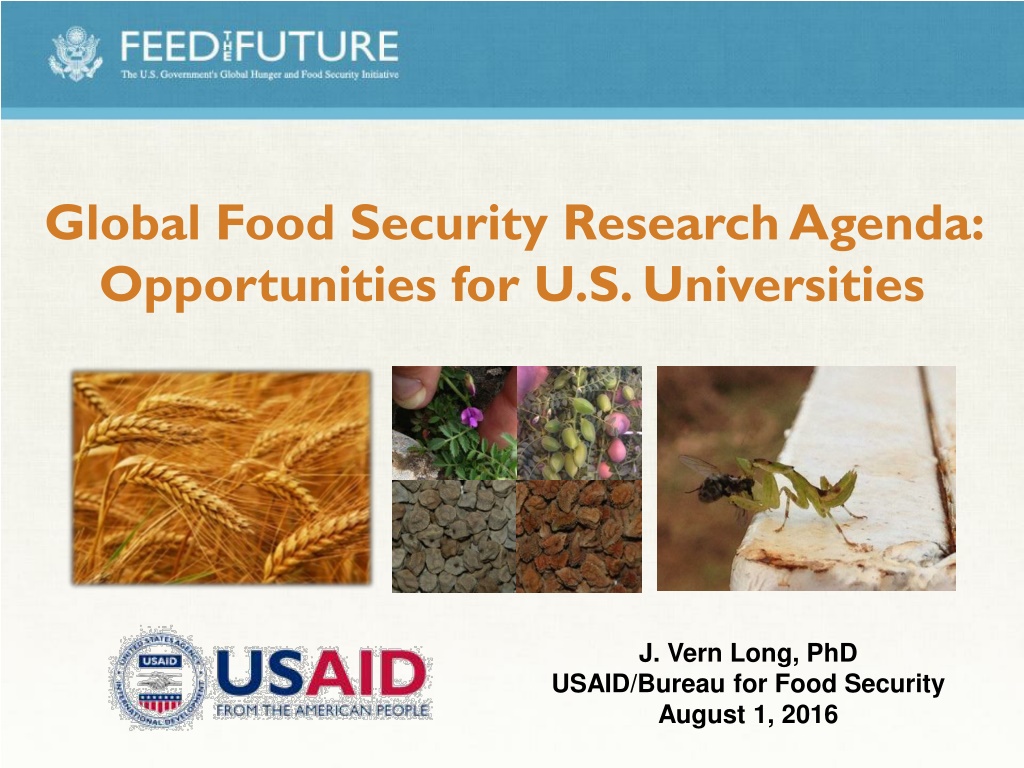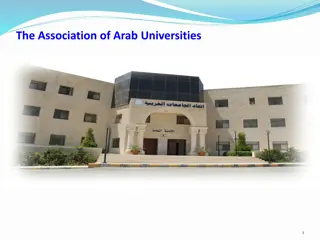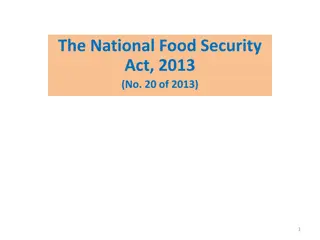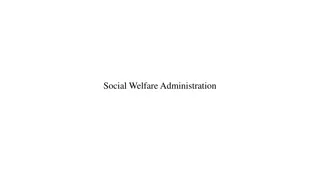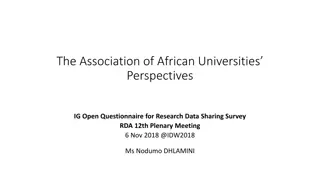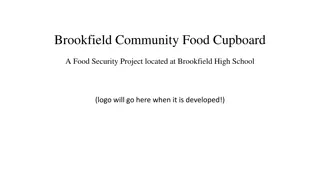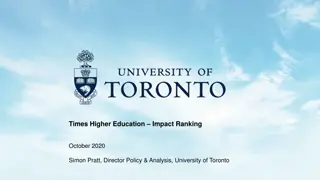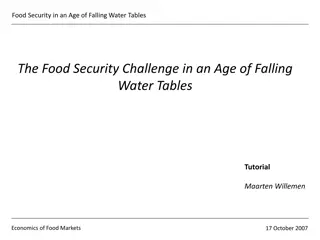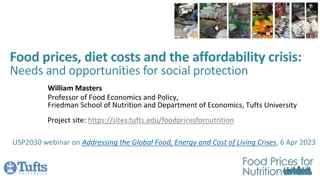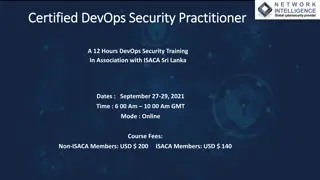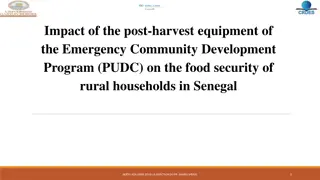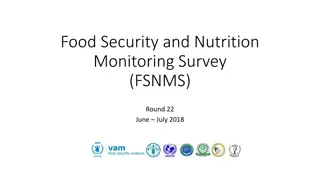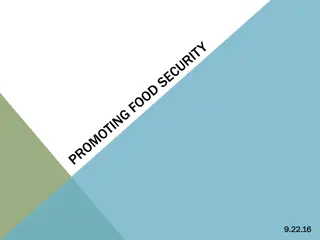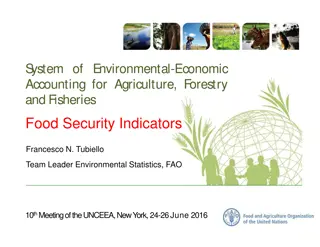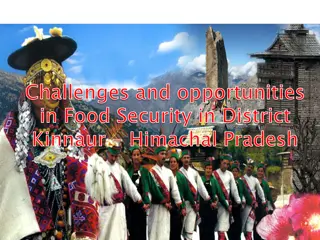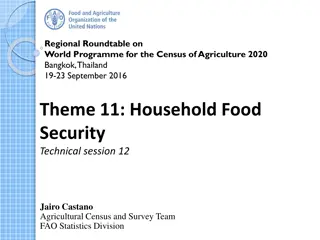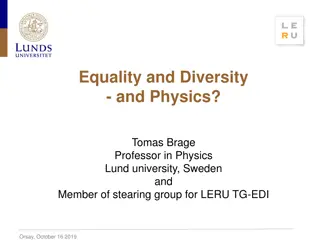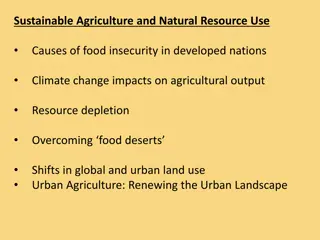Opportunities for U.S. Universities in Global Food Security Research
Explore the potential for U.S. universities in addressing global food security challenges through agriculture, resilient supply chains, and innovative business practices. Learn about the Feed the Future initiative, research opportunities, and the role of higher education in shaping the next generation of agricultural professionals.
Download Presentation

Please find below an Image/Link to download the presentation.
The content on the website is provided AS IS for your information and personal use only. It may not be sold, licensed, or shared on other websites without obtaining consent from the author. Download presentation by click this link. If you encounter any issues during the download, it is possible that the publisher has removed the file from their server.
E N D
Presentation Transcript
Global Food Security Research Agenda: Opportunities for U.S. Universities J. Vern Long, PhD USAID/Bureau for Food Security August 1, 2016
One of the best fields for new college graduates? Agriculture. NEARLY 60,000 HIGH-SKILLED AGRICULTURE JOB OPENINGS EXPECTED ANNUALLY IN U.S., YET ONLY 35,000 GRADUATES AVAILABLE TO FILL THEM USDA/NIFA & Purdue University May 2015 https://nifa.usda.gov/press-release/one-best-fields-new-college-graduates-agriculture
Sadler, M. 2015. The Role of Resilient Supply Chains in the Face of Climate Change
Intensification vs. Extensification Area rea Yield Yield South Asia Sub-Saharan Africa
New Ways of Doing Business under Feed the Future Country-led Focus on Women and Gender Integrate Nutrition and Agriculture Support Sustainable Intensification Increase Economic Resilience Strengthen Capacity of Local Institutions M&E to support real-time learning Impact analysis to build a strong evidence base
What Does Feed the Future Do? 1. Help farmers produce more 2. Help farmers get more food to market 3. Support Research & Development to improve smallholder agriculture in a changing climate 4. Strengthen Regional Trade 5. Create a better Policy Environment 1. Improve Access to Nutritious Food and Nutrition Services
Going forward. Feed the Future initiative Global Food Security Act signed July 20, 2016 US Gov t commitment to Global Food Security What s next? USAID programs continue New research RFAs (more later)
Clear Role for U.S. Universities Next generation agriculture professionals Beyond traditional courses Monitoring & Evaluation courses Humanities history, national literatures Research More food yet less water, more variable conditions Beyond biophysical research Economic/market analyses, consumer demand
U.S. Universities Unique Role Nexus for partnership International networks Former students, long-term collaborations Private sector Commodity associations Trade/export councils These relationships help orient research to demand.
NSF USDA, DOE USAID Translation Basic Applied Utility
Heat Tolerant Maize in South Asia CIMMYT, Purdue, NARS from India, Nepal, Bangladesh, Pakistan, Pioneer and 10 other seed companies Heat tolerant hybrids released: 17 hybrids that outperform the best commercial varieties in yield licensed to partners for scale out in targeted geographies/market. Achieved within 3 years! Unanticipated outcome: some varieties preferred by women farmers. Commercial cultivar HTMA products Pipeline of breeding materials: >700 heat tolerant hybrids under testing Using genomic tools and approaches to identify gene combinations that will thrive under heat and other stressful environments. Successful public-private partnership Eleven private company partners Private sector investment increased from $430,000 to $2.3 million.
New Fertilizer Blending Facility in Ethiopia USAID/ET, World Bank, ATA & GoE collaborate to build 5 fertilizer blending plants and warehouses serving millions of farmers in major production zones Crop yields on many soil types are unresponsive to current GoE one size fits all recommendations 2013-2015 Africa RISING & EIAR scientists identified soil-specific best fertilizer blends and rates for wheat, teff, barley, maize and pulses in target zones. New recommendations boost yields 2-3 times, even in previously non-responsive soils; may include N-P-K plus Sulphur, Zinc, Boron 100s of on-farm trials across 70+ agricultural districts Director General of EIAR, working with AR, to lead taskforce to develop a Decision Support Tool for Appropriate Fertilizer Recommendations to support fertilizer blending plants. Taskforce will mainstream recommendations as best practices through Gov. of Ethiopia The five fertilizer plants will serve over 3 million producers.
USAID/W USAID/Ethiopia and USAID/India Joint research program: Chickpea Innovation Lab Upstream research for farmer success: Diversify gene pool for chickpea breeding using wild relatives heat and drought tolerant chickpeas. Policy Triumph: Deposited 270 new wild chickpea lines from Turkey into the multilateral germplasm system of the International Treaty on Plant Genetic Resources. Partnership: Leveraged $8M in external funds Australian & Canadian industry groups, National Science Foundation, Global Crop Diversity Trust, National Academy of Science 15
Research Program Updates USAID research investments New RFAs launch in early 2017 Legumes & Peanuts New Research Programs (awarded 2018) Summer/Early Fall 2017 RFA topics released Likely RFA released ~ Jan 2018
Please Visit Our Feed the Future Website Thank You! www.feedthefuture.gov
